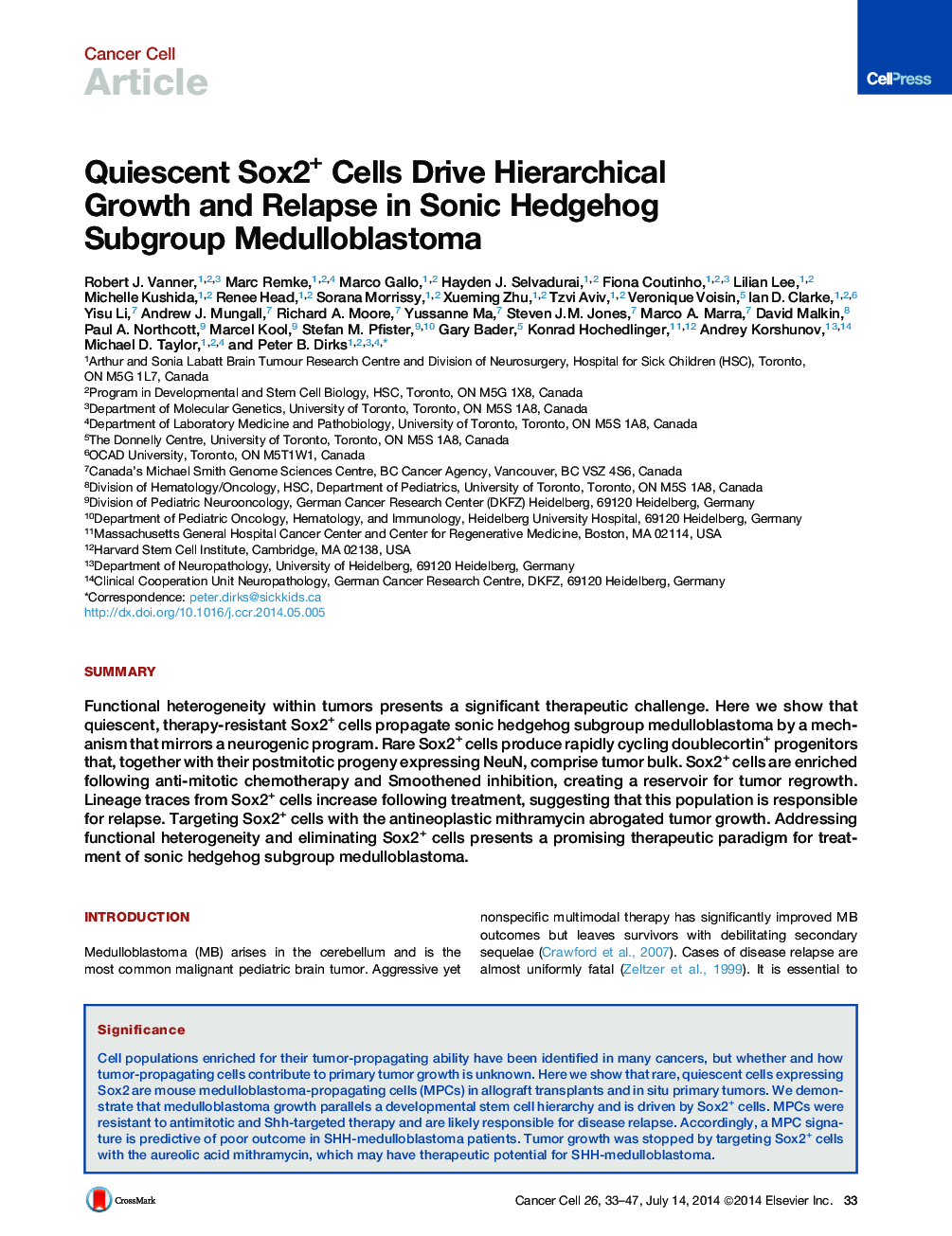| Article ID | Journal | Published Year | Pages | File Type |
|---|---|---|---|---|
| 2106814 | Cancer Cell | 2014 | 15 Pages |
•Sonic hedgehog medulloblastoma growth is driven by rare quiescent Sox2+ cells•Fate mapping and transplantation show that Sox2+ cells are tumor-propagating cells•Sox2+ medulloblastoma cells are resistant to Smoothened inhibition•Targeting Sox2+ medulloblastoma cells with mithramycin blocks tumor growth
SummaryFunctional heterogeneity within tumors presents a significant therapeutic challenge. Here we show that quiescent, therapy-resistant Sox2+ cells propagate sonic hedgehog subgroup medulloblastoma by a mechanism that mirrors a neurogenic program. Rare Sox2+ cells produce rapidly cycling doublecortin+ progenitors that, together with their postmitotic progeny expressing NeuN, comprise tumor bulk. Sox2+ cells are enriched following anti-mitotic chemotherapy and Smoothened inhibition, creating a reservoir for tumor regrowth. Lineage traces from Sox2+ cells increase following treatment, suggesting that this population is responsible for relapse. Targeting Sox2+ cells with the antineoplastic mithramycin abrogated tumor growth. Addressing functional heterogeneity and eliminating Sox2+ cells presents a promising therapeutic paradigm for treatment of sonic hedgehog subgroup medulloblastoma.
Graphical AbstractFigure optionsDownload full-size imageDownload high-quality image (169 K)Download as PowerPoint slide
